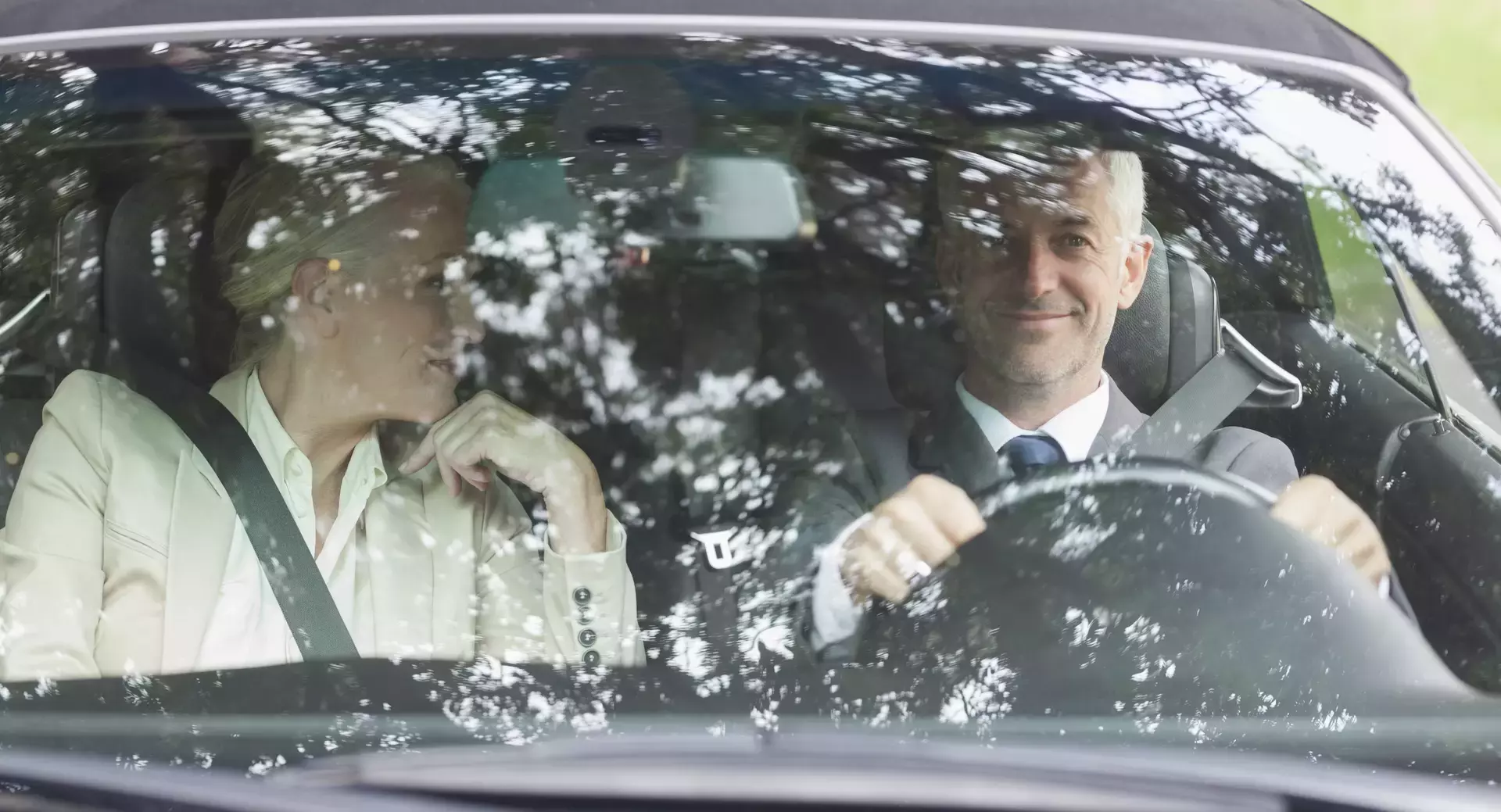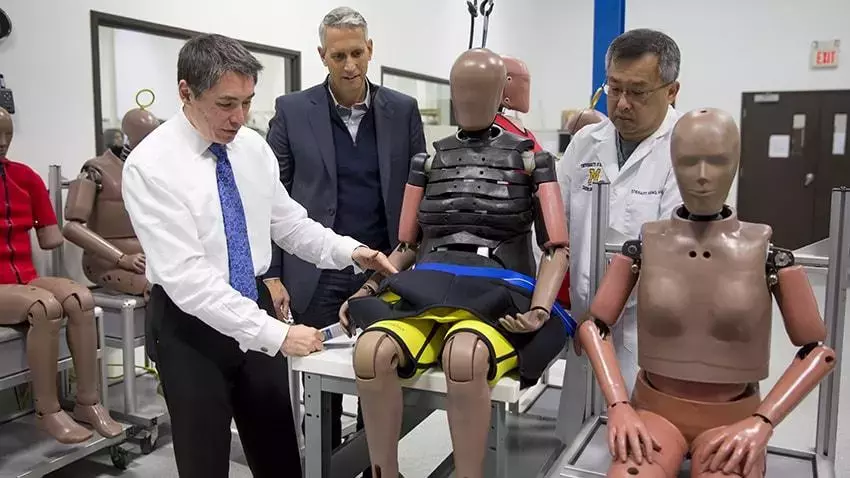Our Grandparents aren’t always safe in the cars they drive. Perception Versus Reality.

If you’re a driver under the age of 60 or so making your way to work in the morning hours and have ever followed behind a slow 90’s era Cadillac Coupe DeVille with only a smidgen of white hair visible above the driver’s headrest, you may have experienced a common phenomenon known as the ‘I’ll never make it to work on time now’ syndrome. Do we dare say this scenario proves that our seniors are driving not only slower than the average lead-footed whippersnapper, but more cautiously as well? Doesn’t that mean they are safer and less likely to be involved in serious car crashes, thereby naturally more insulated against serious injury?
There’s plenty of studies out there describing older drivers and their peculiar habits and deficits while on the road. Things like narrower fields of vision, more difficulty seeing pedestrians, reductions in muscle mass and elasticity, reduced reaction times (that seem to come with declining mental faculties) are all promoted as reasons for the changes we see in how our older parents and grandparents navigate the roadways. So, with these factors slowing down the speeds at which the elderly drive, does their cautious nature equate with safety?
According to AAA Foundation’s June 2017 research brief, drivers ages 16-17 continue to have the highest rates of crash involvement, but drivers age 80 and older have the highest rates of driver deaths. So, although our seniors may have fewer crashes than our very young drivers, they have a much greater chance of serious injury than other age groups.
This leads us to a couple of new papers recently published by the Insurance Institute for Highway Safety (IIHS) detailing older drivers’ vehicle preferences and the subsequent safety and crashworthiness attributed to their choices. The studies reiterate that older people have a heightened risk of dying in a crash given their age-related frailty. But their findings also suggest they drive smaller & lighter passenger cars vs. a younger population that tends to drive the tanks we all hate to park next to at the neighborhood grocer. I guess we’re still talking a bit of physics here too folks.
But let’s be clear, the evidence also seems to reinforce data suggesting newer vehicles, even those smaller & lighter passenger cars, protect drivers of all ages better when it comes to serious and fatal injuries. It’s all great confirmation that the newer safety features can have a positive impact on our wellbeing since the crash test industry’s goal is to generate data that can be used to keep us safer and ultimately alive when the worst happens. So, therefore, the IIHS conclusion is to encourage older drivers to buy newer and [safer] vehicles. Grandma needs a brand-new tank to drive.
There are however obvious economic reasons seniors drive older model passenger cars. Just check out the latest prices on new cars in the U.S. equipped with all the latest safety bells and whistles (lest we forget, many of these features are not always standard equipment). It sometimes beguiles us that the younger, prime working-age folk buy into these fully equipped vehicles. Sticker shock is a real thing. Expecting seniors to consistently make these new purchases may not be the most effective route to saving their lives.
As we appreciate how vehicle design is evaluated for safety, we still must look at the tools the industry uses to come to their conclusions. A little secret, the only age-related crash test dummies are the child models, but those are still generally based on physical stature and weight rather than relevant internal body structure and dynamics. Adult crash test dummies are not modeled after the unique physiology of our grandparents. If fact, a lot of military data was used to create the (most widely used) adult 50% percentile dummy physique.
As the structure of the chest changes from the 20s to the 80s, the risk of chest injury goes up fifteenfold, Michigan Medicine trauma surgeon Stewart Wang, M.D. says.
“You can’t talk about injuries without talking about the person — it’s individuals who are hurt,” says Wang, who is a sought-after collaborator on car safety as the director of the U-M International Center for Automotive Medicine (ICAM).
“The condition, size and shape of an individual is hugely important in how severe their injuries are in any given crash.”
Chris O’Connor, president and chief executive officer at Humanetics adds “Few would have envisioned that people would drive into their 80s, but we have to look at that,” he says “As the population changes, we must have test equipment that resembles consumers today.”
This leads us to wonder, shouldn’t we have testing tools to help us evaluate an elderly driver in a way that gives us data on how their specific bodies react in a car crash? Especially given their age-related fragility.
Yes! And there is a new elderly dummy developed by Humanetics with the aid of University of Michigan trauma experts. This new ATD represents a 70-year-old elderly female occupant that has a BMI of 29, and its torso and chest have been substantially redesigned, sagging a bit more than the military physique of the crash-test dummies safety testing usually relies on.
“You can’t talk about injuries without talking about the person — it’s individuals who are hurt"
-Michigan Medicine trauma surgeon Stewart Wang, M.D.
Developed in part by utilizing actual crash injury research from the International Center for Automotive Medicine (ICAM) and the University of Michigan Transportation Research Institute (UMTRI) the dummy uses precise internal organ positioning aided by the use of MRI scan data and a revolutionary new organ impact measurement system designed exclusively by Humanetics. This design allows for precise regional stiffness differences and pressure measurements of internal injuries sustained in potential automotive accidents for this rapidly growing demographic.
New tools, new car designs, and new crash data should be the trifecta of understanding into how our elderly population fares in any vehicle they wish to drive. The future equivalents of that 90’s era Coupe DeVille should be the safest car our children will ever drive when they are slowing traffic in their golden years on your end of the block.

Trauma surgeon Stewart Wang, M.D. and Humanetics CEO Chris O'Connor look on as the female Elderly dummy is shown.

Mark Brown
Mark is the Product Marketing Manager at Humanetics Safety and works closely with Engineering and Sales to develop and refine content that is both useful and informative for our industry. With over two decades of experience in crash test dummy product Quality, Technical, Sales, and Marketing, Mark produces a wide range of media and publications including our service bulletins, webinars, editorial articles, and contributes to our marketing collateral.